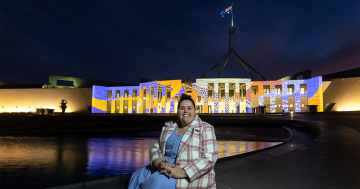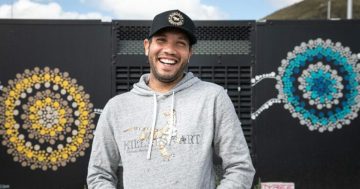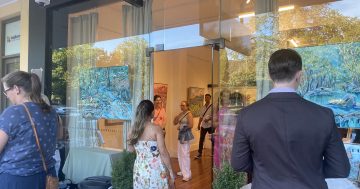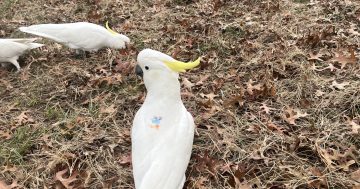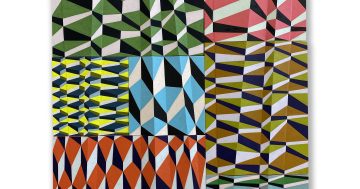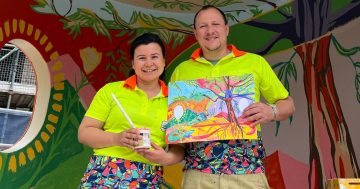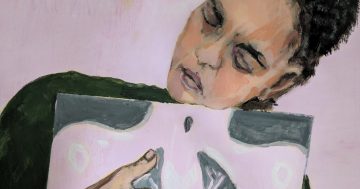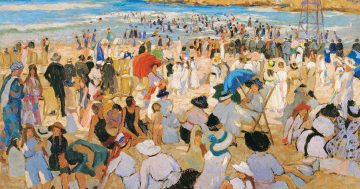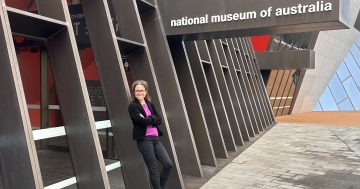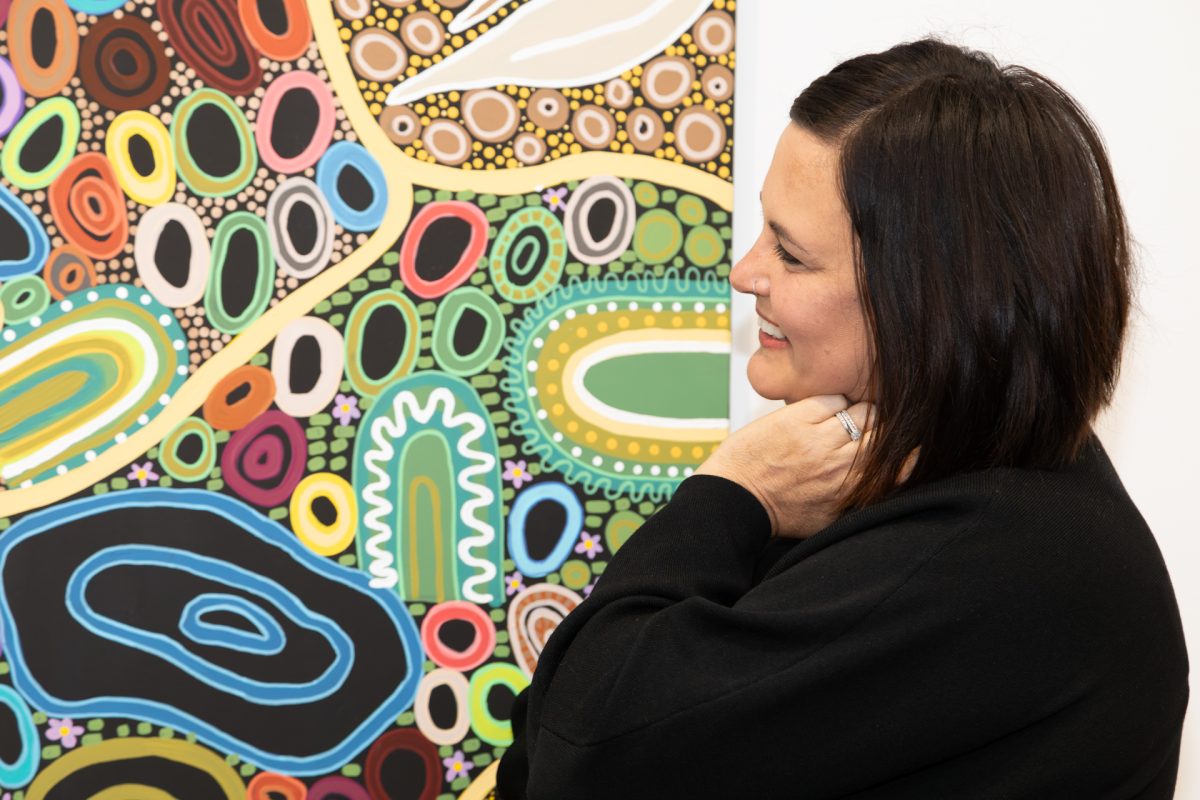
Rebekah Weddell with her artwork, Communities. Photo: Michelle Kroll.
The painting is stunning: vivid greens and blues and lazy long loops of yellow weave across the canvas, dappled with Canberra’s native bluebells, eucalypt blossoms and kangaroo tracks.
It’s called Communities, it hangs in the Region foyer, and it’s a literal and metaphorical map of Canberra, a place where people gather from across the country to create a home.
Canberra’s lakes and waterways, the Brindabellas and the Murrumbidgee are all here and if you know where to look, the Belco owl has been painted out.
That tickles artist Rebekah Weddell, who wanted her painting to tell layered stories about what it means to find your identity.
“I know it’s there but when I decided the owl didn’t fit with this painting, I quite liked the idea of it being hidden,” she says.
Bek, who is a teacher, hasn’t always lived in Canberra. She grew up on the far North Coast near Byron Bay, at a place called The Pocket. She’s Dhanggati/Birrbay on her father’s side and German/Irish on her mother’s.
But Canberra is where she came to terms with – and fully embraced – a heritage that for a long time felt uncertain.
Bek didn’t meet her birth father until she was in her mid-20s and says it also took her a long time to understand the trauma experienced by members of the Stolen Generations and the impact over many years.
“I questioned if I really had inherited a right to identify in such a way, with limited knowledge about my mob other than names and geographical locations,” she wrote when her work was exhibited at Belconnen Arts Centre last year.
Encountering societal assumptions about being Aboriginal was also tough.

Communities, by Rebekah Weddell, maps Canberra and the people who come together here. Photo: Genevieve Jacobs.
The Belconnen exhibition – Inherited – illustrated her journey towards feeling accepted. This work, in particular, represented the strong sense of community she found here in the ACT.
“I’ve become connected to the mob here, something that’s really lovely for me and has built over time. This is where my cultural identity has become a whole lot stronger, learning and understanding what was lacking when I was younger,” she says.
“This is where I’ve felt the most connected. Making art, learning language, connecting with family has been a huge part of filling in those holes and gaps and unknowns.”
Bek’s work draws on her cultural heritage but translates it into contemporary art, using vibrant colour choice to create a literal and metaphorical “different perspective”.
“I want to communicate how beautiful the country is here,” she explains. “I haven’t been taught in any particular way by elders, I’ve developed own style. The cultural connections are the story telling.
“It’s important to acknowledge I’m a visitor but I’m grateful to draw inspiration from here.”
That deepening sense of cultural understanding extends to her work in the ACT’s education system where she encounters children with their own world views, cultural heritage and practises.
“As a teacher in the classroom you do plenty of learning yourself,” she says. “I’d like us to move away from having one way of thinking and to share our knowledge with future generations so our country is a reconciled one.”












